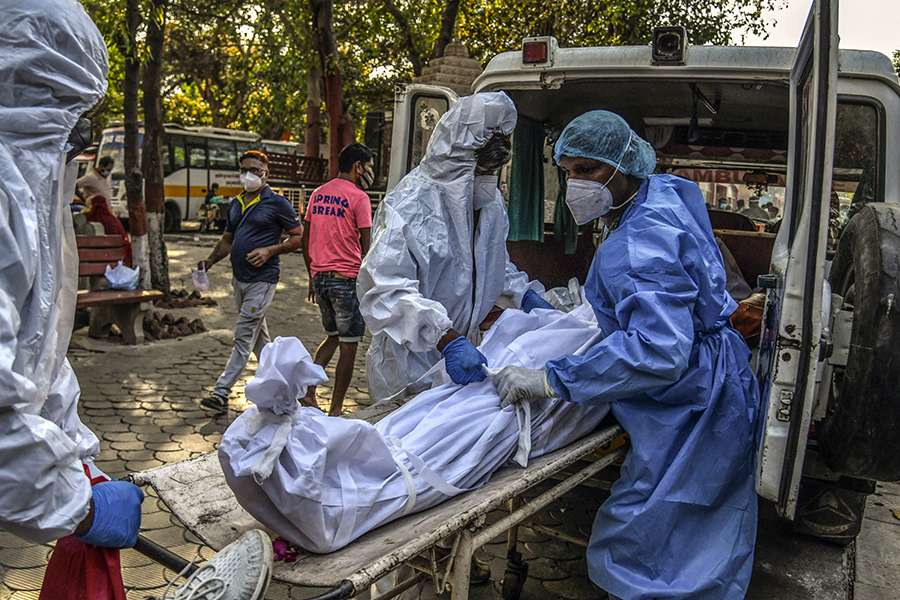Introduction
The COVID-19 pandemic has cast a long shadow over societies globally, reshaping norms and straining healthcare infrastructures. Despite concerted efforts to quantify its toll, official counts often fall short, failing to encapsulate the full scope of the crisis. Excess mortality studies have hinted at a significant discrepancy, suggesting that numerous deaths attributed to natural causes might actually be uncounted COVID-19 fatalities. However, the absence of concrete data validating this assertion has perpetuated uncertainties regarding the true extent of COVID-19 mortality.

In response to this pressing need for clarity, a landmark study led by the Boston University School of Public Health (BUSPH) and the University of Pennsylvania (UPenn) has emerged. Published in the prestigious journal PNAS, this study delved into data spanning the pandemic’s first 30 months across thousands of U.S. counties. By meticulously comparing reported COVID-19 deaths to excess deaths from non-COVID natural causes, the research provided a nuanced understanding of the pandemic’s mortality landscape, revealing significant undercounts and regional disparities. These findings underscore the imperative for enhanced surveillance and reporting mechanisms to accurately gauge the pandemic’s toll and inform targeted public health interventions.
Unveiling the Reality: New Analysis by Boston University School of Public Health and University of Pennsylvania
A groundbreaking study led by the Boston University School of Public Health (BUSPH) and the University of Pennsylvania (UPenn) has sought to address this gap, marking a significant milestone in our comprehension of COVID-19 mortality dynamics. Published in the esteemed journal PNAS, this study stands as a pivotal contribution to our understanding of the pandemic’s toll. Through meticulous analysis spanning the initial 30 months of the crisis and encompassing 3,127 counties across the United States from March 2020 to August 2022, researchers endeavored to untangle the complex web of mortality trends. Their efforts aimed not only to elucidate the true scale of COVID-19’s impact but also to shed light on the intricacies of mortality patterns during this tumultuous period, offering invaluable insights for public health interventions and policy formulation.
The study’s methodical approach involved comparing reported COVID-19 deaths to excess deaths from non-COVID natural causes, a novel strategy that provided a comprehensive understanding of the pandemic’s mortality landscape. By scrutinizing data at both temporal and geographical scales, researchers revealed nuanced patterns, such as increases in non-COVID excess deaths coinciding with or preceding surges in reported COVID-19 fatalities across most U.S. counties. Moreover, the study uncovered regional disparities, with nonmetropolitan areas in the West and South exhibiting the largest gaps between non-COVID excess deaths and reported COVID-19 fatalities. These findings underscore the multifaceted nature of COVID-19 mortality and highlight the importance of tailored public health strategies to address varied regional challenges and disparities in mortality reporting.
Methodology
Employing innovative statistical methods, the researchers meticulously compared reported COVID-19 deaths to excess deaths due to non-COVID natural causes. This approach provided a nuanced understanding of the mortality landscape, shedding light on the extent to which uncounted COVID-19 fatalities contributed to overall mortality rates. By dissecting mortality data in this manner, the study not only unveiled the hidden toll of the pandemic but also elucidated the intricate interplay between COVID-19 fatalities and other causes of death. This granular analysis allowed for a more comprehensive assessment of mortality dynamics, enabling policymakers and public health officials to tailor interventions and allocate resources more effectively. Furthermore, by scrutinizing mortality trends across different geographic regions and demographic groups, the study provided valuable insights into the disparities and vulnerabilities that shape the pandemic’s impact, laying the groundwork for targeted interventions aimed at mitigating inequities in healthcare access and outcomes.
Revealing Insights
The findings of the study are both staggering and revelatory. It estimated that a staggering 1.2 million excess natural-cause deaths occurred in U.S. counties during the specified timeframe, underscoring the magnitude of the crisis. This figure represents not just a statistical anomaly, but a profound human toll that reverberates across communities nationwide. However, perhaps more strikingly, approximately 163,000 of these deaths did not even have COVID-19 listed on the death certificates, signaling a significant gap in the official count of COVID-19 fatalities. This revelation underscores the inadequacies in the reporting and recognition of COVID-19-related deaths, exposing a critical blind spot in our understanding of the pandemic’s true impact. Beyond mere numbers, these uncounted fatalities represent lives lost and families shattered, emphasizing the urgent need for improved surveillance and reporting mechanisms to accurately capture the toll of the virus. Failure to acknowledge these uncounted deaths not only distorts our perception of the pandemic but also hampers efforts to implement targeted interventions and allocate resources where they are most needed.

Temporal and Geographical Patterns
The analysis unearthed intriguing temporal and geographical patterns, providing valuable insights into the dynamics of COVID-19 mortality. Increases in non-COVID excess deaths often preceded or coincided with surges in reported COVID-19 fatalities in most U.S. counties, suggesting a potential link between the two phenomena. Moreover, the gap between non-COVID excess deaths and reported COVID-19 fatalities was most pronounced in nonmetropolitan counties, the West, and the South, highlighting regional disparities in mortality reporting.
Implications and Recommendations
These findings have far-reaching implications for public health policy and pandemic response efforts. By highlighting the extent of undercounting in COVID-19 mortality data, the study challenges previous assumptions and underscores the need for improved death investigation and certification processes. Standardizing these procedures should be a top priority, ensuring that the true toll of the pandemic is accurately reflected in official statistics.
Conclusion
In conclusion, the study represents a crucial step forward in our understanding of COVID-19 mortality dynamics. By unraveling the complexities of excess mortality and uncounted COVID-19 deaths, it provides invaluable insights that can inform future public health interventions and policy decisions. As we strive to honor the memory of those lost to COVID-19, it is imperative that we confront the stark reality revealed by this research and take proactive steps to ensure a more comprehensive understanding of the pandemic’s impact. Only through a concerted effort to accurately account for COVID-19 mortality can we pave the way for effective strategies to mitigate its devastating consequences and safeguard public health in the future.
Related Topics:
- Boost Your Immune System Naturally: Top Tips for Staying Healthy All Year – Micro2media
- Supercharge Your Breakfast: Quick and Healthy Recipes for Energy – Micro2media
- Many excess deaths attributed to natural causes are actually uncounted COVID-19 deaths, new analysis reveals | ScienceDaily
- People are inclined to hide a contagious illness while around others, research shows | ScienceDaily
